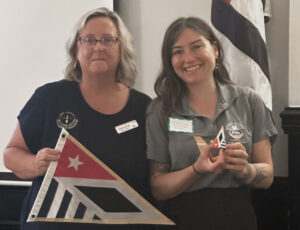News
Riverkeeper Spotlight: Katy Hunt and CAFO water sampling
Posted on February 11th, 2021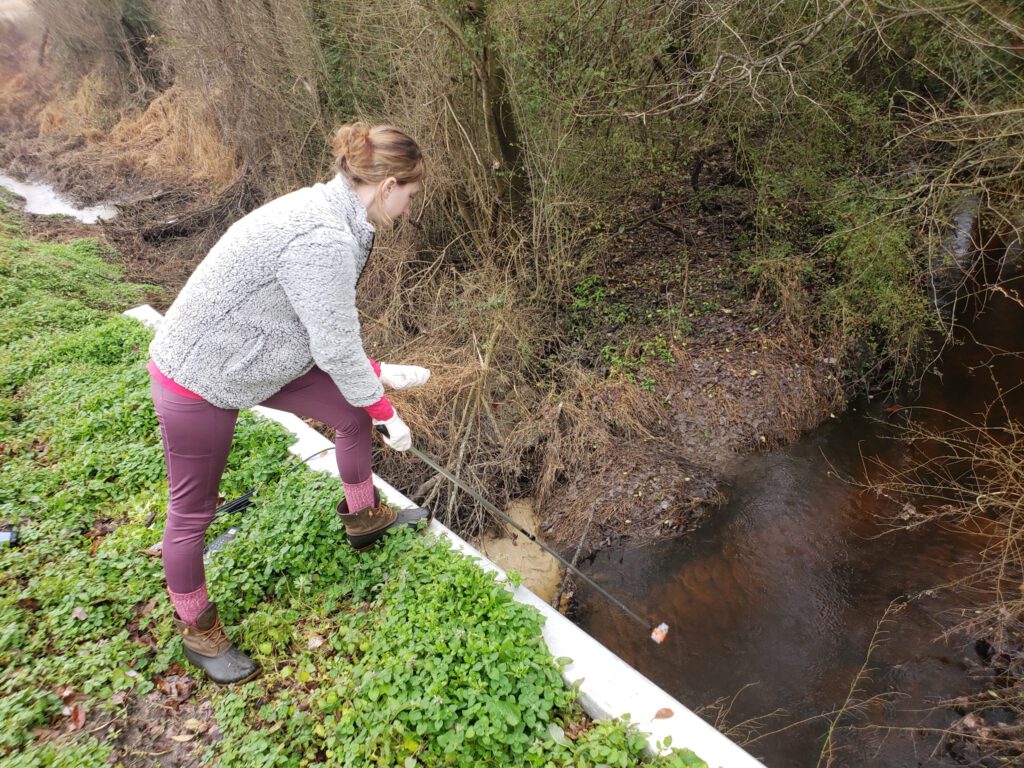
Lower Neuse Riverkeeper Katy Hunt takes samples to test for nutrient pollution from a tributary of the Neuse River. (Photo by Clay Barber)
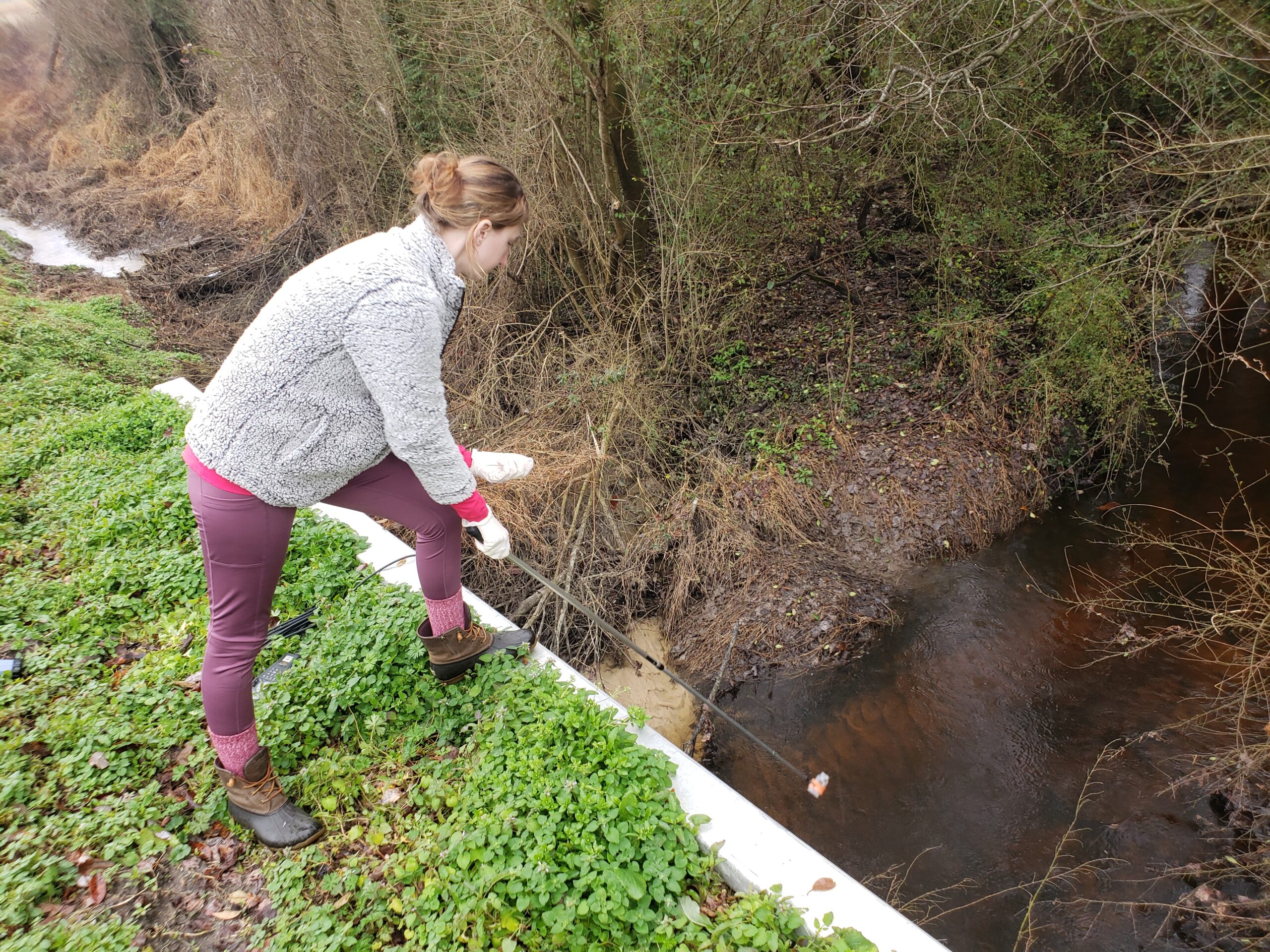
Every week, Lower Neuse Riverkeeper Katy Hunt is out in the field, on the banks of local creeks and streams, capturing water samples to shore up a known fact: concentrated animal feeding operations (CAFOs) are harmful to the waterways.
It’s part of Hunt’s job as a Riverkeeper — taking samples, doing the testing and making sure the data discovered gets into the right hands at North Carolina Department of Environmental Quality.
“I’m looking at both fecal-bacteria pollution, as well as nutrient pollution. Nutrient pollution is the No.1 pollution on the Neuse,” Hunt said. “It’s one of those things that when you hear the word nutrient, it seems like a good thing, but it’s really the old adage of ‘Too much of a good thing is really a bad thing.’”
The issue is not only spills from industrial hog waste lagoons into streams or creeks from breaches, but also how the accepted disposal of the waste — spraying over neighboring fields — leads to runoff into those same waterways.
“We look at nutrients and fecal bacteria like e. Coli and fecal coliform, and the amount of nutrients that come out of these facilities from spraying. The crops that they are spraying the waste on can only use so much of the nutrients, so everything else is running off into creeks and streams,” she said. “It might not be this much from one facility, but all these facilities add up, and the nutrients flow downstream into the Neuse. That’s when we see the massive fish kills like we saw on the Neuse back in September and October.”
This is particularly troublesome in coastal Carolina, where heavy rains and tropical events can lead to over-application of waste in fields to lower lagoon levels in advance of coming weather.
Hunt focuses on the industrial hog facilities with a history of DEQ violations where operators have failed to follow the rules and protocols laid out in their permits.
“This is part of a larger, statewide campaign to really keep an eye on the facilities, because DEQ can’t — they have an annual inspection once a year, and that’s it, unless there’s a problem,” she said.
Hunt’s investigation from early January is paying off: photos she captured during a flight over a problem facility — one that spilled more than a million gallons of hog waste into a tributary of the Trent River in late December — showed levels of hog waste exceeding state requirements at a separate facility, which had already resulted in one DEQ Notice of Violation in summer of 2020.
“The state doesn’t really have the ability to keep an eye on all these facilities to make sure they are always following the rules, so I submitted the photos to the state, which has resulted in another notice of violation,” Hunt said.
The Riverkeeper Spotlight series delves into the ways your Riverkeepers are working to keep our waterways fishable, swimmable and drinkable.
Related News
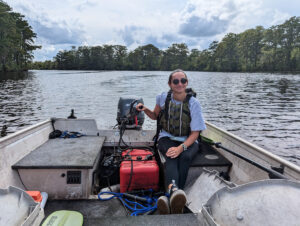
Riverkeeper monitoring Tar-Pamlico Water Trail
July 25th 2024

Rain ramps up trash-trap cleanouts
July 25th 2024

Riverkeeper, intern take on emergency trash trap cleanout
July 25th 2024

Tar-Pam Riverkeeper investigates Cub Creek turbidity
July 25th 2024
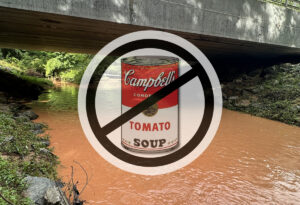
Heavy rains lead to sky-high turbidity on Lick Creek
July 25th 2024
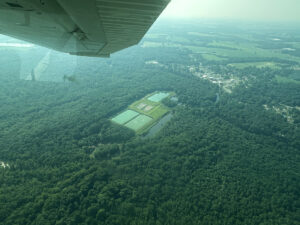
Riverkeeper: What goes up, must come down
July 18th 2024
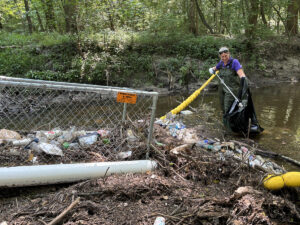
Greenville’s trash trap gets emergency cleanout
July 18th 2024

Sound Rivers gets close up of cyanobacteria
July 18th 2024
